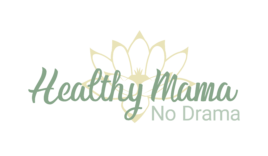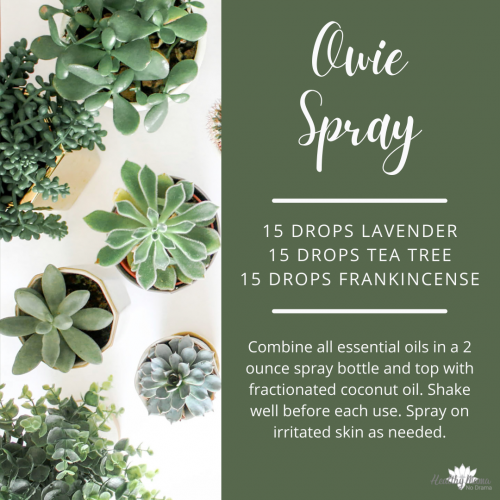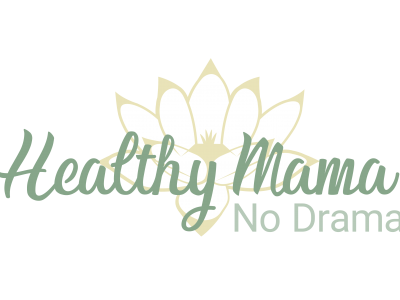One of my favorite things about the warmer seasons…really all of the seasons except winter…is the ability to get out of the house, get some fresh air, soak up some vitamin D, and let my kids run off the wiggles. With those warmer months, and extra outside time, comes an increase in the number of “owies” our family sees. And with an increase in owies, comes an increase in the need for triple antibiotic ointment. Or does it?
Along my journey to reducing my family’s toxic load, one of the areas I have wanted to tackle is finding a “cleaner” way to take care of first aid needs. One of the products I have tried to stay away from is triple antibiotic ointments. Like many other products, I heard lots of negative things circulating around in the “health world” regarding these ointments. The primary concern being that they often have petroleum jelly or mineral oil in them. I’m talking about products like Neosporin, but this also applies to products like Aquaphor and Vaseline. In fact, I was speaking with my husband one day about my concerns over those products and he challenged me to do some more research on the issue as I may not have all the facts. I love that he encouraged me to dig deeper. So, I did. And, here is what I discovered along with my decision after doing the research.
What are petroleum jelly and mineral oil?
Basically, they are the byproduct of oil refining. So, definitely would not be considered eco-friendly products. They are derived from the matter that was found coating the bottom of oil rigs (eww, right?!). This may come as no shock to you, but some of the elements that are removed during the process of converting the material to an ointment are considered carcinogenic in some cases.
Are they dangerous?
This is where a lot of the conflicting (and sometimes scary) information lies. There is concern they could be linked to cancer, although I have struggled to find actual research to support this. Here’s the deal…the cosmetic grade mineral oil or petroleum jelly varieties found in over-the-counter ointments have gone through an extensive purification process to remove contaminants and impurities. They’re highly refined. The carcinogenic elements are supposedly completely removed. It’s for this reason that many will claim they are safe to use, particularly the name brand options like Neosporin and Vaseline.
In the European Union, petrolatum can only be used in cosmetics “if the full refining history is known and it can be shown that the substance from which it is produced is not a carcinogen.” Typically, the US has not proven to have anywhere close to as strict of guidelines and restrictions as the EU. For example, the last I checked, the EU has banned over 1300 ingredients in personal care products. Compare that to less than 20 banned in the US. Not an area we want to be so behind! So, that begs the question… since petroleum jelly can be found in different grades of purity, how do I know how non-toxic my petroleum jelly-based product is? And, do I wanted to have to do all of the research to ensure this one product is as clean and safe as it is supposed to be?
Bacterial resistance
Aside from a lack of evidence that triple antibiotic ointments heal wounds any faster than what the body could naturally do on its own, another primary concern is the three main antibiotic ingredients. This is where bacterial resistance comes in. Overuse of antibiotics can cause overgrowth of antibiotic-resistant bacteria. The more we try to kill the bacteria with antibiotics, the more the bacteria learns how to fight the antibiotics. This is not good because when an antibiotic is really needed, our bodies are no longer able to receive the support it can offer.
My recommendation
Taking the above questions into consideration, it really does come down to how you personally feel about the issue, and how much effort you’re willing to put into researching your product choices. Here’s my opinion…
I try to avoid using the typical first aid ointments like Neosporin or Vaseline, and here are my primary reasons. To me, even if they are considered “safe”, if there are this many legitimate reasons to NOT use them, and there are also safer alternatives, then why not use the safer alternatives? Anytime there is a reasonable natural, plant-based option, I’m going to take it. It’s safer and my body knows how to process and respond to it better.
- They’re often not needed. Cuts and scrapes can heal on their own. Our bodies were intricately designed to be able to heal so many ailments! In fact, there is even evidence that suggests dirt contains beneficial bacteria that could actually booster your immune system and help wounds heal. The old saying, “go rub some dirt on it” had to come from somewhere!
- They can cause clogged pores. One of the supposed benefits of these ointment products is that they help trap moisture in your skin. However, in addition to moisture, they can also trap ingredients in your skin that clog pores.
- Antibiotic overuse = antibiotic resistance. As stated above, the overuse of antibiotics is causing a growth of super-resistant organisms. The Mayo Clinic states, “nearly all significant bacterial infections in the world are becoming resistant to commonly used antibiotics.“ This is not only a problem with ointments, but the plethora of antibacterial products on shelves today.
- Skin irritation. About 25% of users develop skin irritations after using these ointments. Sometimes these irritations are severe. In case math isn’t your best subject, that’s one in four people!
- Prevent natural immunities. There is a theory that a lack of exposure to bacteria, germs, and other infectious agents can actually increase your risk for autoimmune disease. It’s called the hygiene hypothesis, and there is a lot of research to support this theory.
- They interrupt the body’s natural clotting process. Again, our bodies were designed to heal themselves! Have you ever noticed how quickly your blood starts to clot after you get a cut? This is part of the body’s natural healing process. But, applying ointment to a wound right away prevents the wound from doing this. This will actually cause more harm than good.
- Proper refining is required for the product to be safe. I simply don’t want to have to worry about if the product I’m using underwent proper refining.
- Better options. There are other, more natural and eco-friendly solutions that are available and very cost effective. As I mentioned above, if there is a simple, natural alternative, I’m going to choose it. And there is! As
Now what?
So, I knew I DIDN’T want to use the traditional ointment product, but I didn’t know what I SHOULD use? And then a friend shared this recipe with me and oh. my. word. am I in love! Not only does it use safe ingredients that work really effectively, but it’s also just as convenient as those typical creams and ointments. Plus, because you’re using essential oils that can cross over the cell membrane, you’re offering so much more value and health to your body!
I’m pretty confident that once you start using this, you’ll keep one everywhere. In your purse or diaper bag, yours gym or sports bag, in your bathroom and kitchen, and maybe even in your garage! It’s so handy you’ll want one everywhere!
For those times when I want more of an “ointment’ consistency, I’ve started using an essential-oil based ointment that is petroleum-free. As a side note, if you’re in the market for a replacement for Vaseline, some great alternatives would be beeswax, coconut oil, or olive oil.
DIY Owie Spray
Ingredients:
15 drops Lavender essential oil
15 drops Melaleuca (Tea Tree) essential oil
15 drops Frankincense essential oil
Fractionated coconut oil
Combine all essential oils in a 2 ounce amber glass spray bottle and top with fractionated coconut oil. Shake well before each use. Spray on irritated skin as needed.
Note: Fractionated coconut oil is a carrier oil that remains liquid, even if stored in the refrigerator (unlike regular coconut oil). It absorbs really well into the skin and leaves skin feeling silky smooth and non-greasy, unlike other vegetable carrier oils.
Some of the links above are affiliate links. This means that, at zero cost to you, I will earn an affiliate commission if you click through the link and finalize a purchase. Thanks for your support!
Related posts:
- Why Essential Oils Are…Essential If you’ve done even a small amount of researching online about natural health, chances are that you’ve come across essential oils. Their popularity is ever-growing both in the natural world...
- Non-Toxic Bug Repellent Bug repellent…another one of those products that was on my “list” for a long time. The list of products that I knew weren’t safe for my family, but that I...
- Non-Toxic DIY Dry Shampoo Can I tell you a secret? I don’t wash my hair every day. I don’t even wash my hair every week. It’s not because I’m lazy, it’s because my hair...
- Why you should rethink using hand sanitizer Even with the most effective of hand sanitizers, you need to seriously consider if they're worth the risk. Why? There are two primary reasons: harmful ingredients and unintended consequences....


